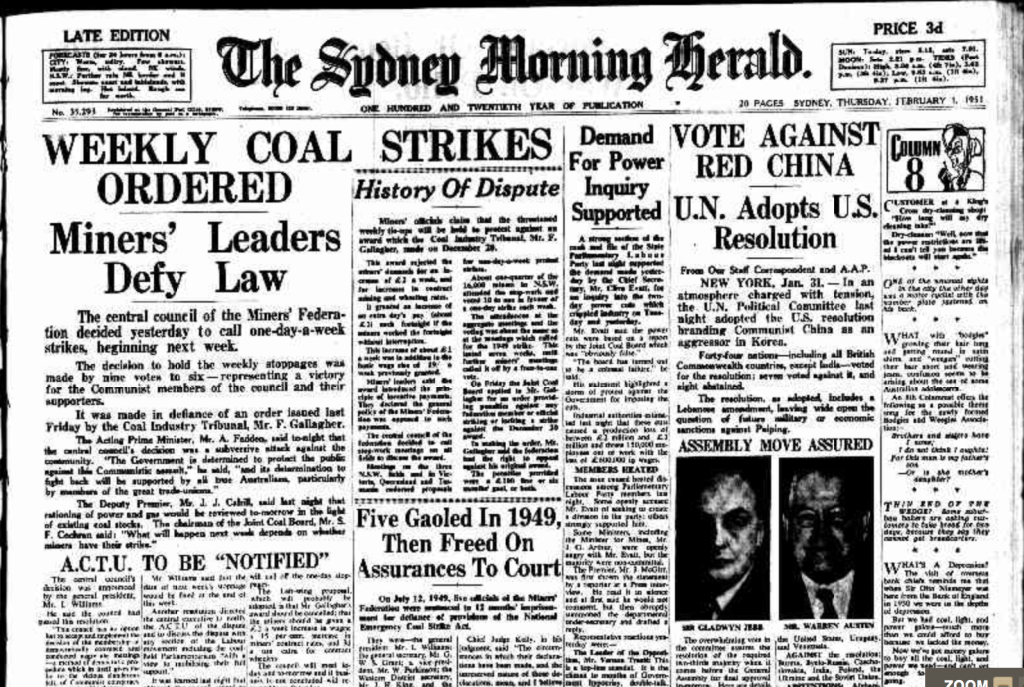On Tuesday I posted The Authors Guild, orphan works and civil rights? (Authors Guild v Hathitrust pt. 3) in which I addressed the arguments made by on behalf of the plaintiffs on appeal in Authors Guild v. Hathitrust. The Authors Guild takes the rather extreme position that:
“Any iteration of the OWP [orphan works program] under which copyrighted works are made available for public view and download violates the Copyright Act.” (Authors Guild Ap. Br. page 13; see generally pages 13).
Their appeal brief poses the question:
“Is it ever lawful to take an entire copyright-protected book and make it widely available for display and download without permission?” (Authors Guild Ap. Br. page 13).
I believe that the answer to that question is YES. On Tuesday I gave an example of an individual orphan work made accessible on the Civil Rights Movement Veterans Website. Today I want to extend that discussion to an entire orphan works program.
Trove, The Australian National Library and Orphan Works
Trove is the Australian National Library’s primary vehicle to assist users to access digital content held by collecting institutions across Australia. Trove is used by tens of thousands of Australians every day.
In July 2008, Trove opened up Australian newspaper articles published from the 1800s to 1955 to full-text searching. ![]()
Trove goes beyond the 1955 by agreement with newspaper publishers, but for anything prior to 1955 the NLA and the libraries in its network work on the assumption that there is no requirement to obtain permission. (See e.g., Selection Policy (http://www.nla.gov.au/content/selection-policy) “The newspapers must not have copyright restrictions i.e. anything before 1955 is suitable”).
An implicit orphan works policy
In selecting 1955 as the cut-off date, the NLA has adopted what they would call a sensible risk management policy and I would call an orphan works policy. Under Australian copyright law (Australian Copyright Act 1968) the date on which the copyright in a literary work expires depends on the date of publication and the date of the death of the author.
- If a literary work was published in the lifetime of the author, and that author died before January1, 1957, the work is out of copyright.
- Any literary work published in the lifetime of an author who died on or after January1, 1957 and before 2005, will be out of copyright 50 years after that author’s death.
- If a work was first published anonymously and the identity of the author cannot be ascertained on reasonable inquiry, the period of copyright protection is measured from the year of publication and not the year of the author’s death. (See Section 34 of the Australian Copyright Act 1968).
- The law relating to photographs in Australia is a little easier: any photograph taken before 1955 is in the public domain. (See Section 33 of the Australian Copyright Act 1968).
Newspapers contain works by many different authors. For each individual article in a newspaper, the period of copyright protection is measured from the death of the author, even if the author assigned the copyright to the publisher.
What does all this mean for library digitization?
In 2013 the odds are pretty good that anything published in, say 1950, is in the public domain in Australia. But, if a work was published in 1953 and the author died in 1973, then the copyright would not expire until 2023.
Before he retired in 2011 Warwick Cathro was the Assistant Director-General, Resource Sharing and Innovation at the NLA. Warwick was a pioneer in the delivery of innovative network services to the Australian library community and is considered the founder of Trove. I spoke to Warwick about the NLA’s approach to newspaper digitization and he said:
“The NLA thus took a “risk management” approach to copyright issues in its newspaper digitization program.
We did this because of the manifest public benefit in digitising this content. We never attempted to clear copyright in individual articles; how could we ever do this for tens of millions of articles?
To my knowledge, in the five years since this content has been made available online, not one copyright owner has objected. If any were to do so the NLA would discuss the purpose of its digitization program and seek permission to include the creator’s work in the newspaper database. If this could not be negotiated the NLA would take down the item or article in question.”
Of course, it is much easier to get your lawyers to sign off on this kind of sensible risk management approach that respects the wishes of authors and maximizes public access to knowledge in a jurisdiction without statutory damages.
Orphan works projects are not just a stalking horse for Silicon Valley internet companies, nor are they simply the whimsical playthings of obscure institutions happy to work in legal grey areas. Making orphan works available to the public should be one of the core missions of American libraries. Libraries could pursue this mission more easily if statutory damages were abolished and pragmatic risk management prevailed over the misinformed notion that the purpose of copyright is prevent unauthorized use solely for the sake of prevention.

